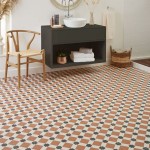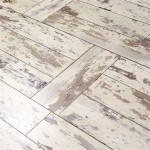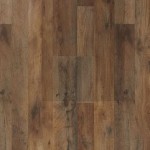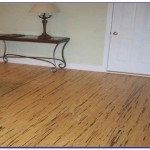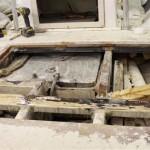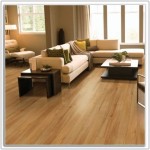DIY Inexpensive Flooring Ideas to Transform Your Space
Flooring is a foundational element of any interior design. However, the cost of new flooring can often be a significant barrier to home improvement projects. Fortunately, there are several inexpensive DIY flooring options that can dramatically alter the look and feel of a room without breaking the bank. Careful planning, attention to detail, and a willingness to invest time and effort can result in beautiful and durable floors that are both budget-friendly and personally satisfying.
Understanding Your Needs and Limitations
Before launching into any flooring project, a thorough assessment of the space is crucial. This involves evaluating the existing subfloor, the anticipated foot traffic, the room's moisture levels, and the desired aesthetic. The subfloor, the structural layer underneath the visible flooring, must be sound, level, and free of significant damage. Repairs to the subfloor, while potentially adding to the initial cost, are essential to ensure the longevity and stability of the new flooring. High-traffic areas, such as hallways and kitchens, require more durable and easily cleanable materials. In bathrooms and basements, moisture resistance is a paramount concern.
Furthermore, the chosen flooring material should complement the existing architectural style and overall décor of the home. A rustic farmhouse might benefit from reclaimed wood, while a modern apartment might be better suited to sleek, minimalist options. It is important to consider the visual impact of the new flooring on the room's perceived size and brightness. Lighter colors tend to make spaces feel larger and more open, while darker colors can create a cozier, more intimate atmosphere.
Accurately measuring the room’s dimensions is also critical for calculating the necessary amount of materials. Always order slightly more material than needed to account for cuts, waste, and potential future repairs. Failing to do so could result in mismatched dye lots or material shortages, delaying the project and potentially increasing costs.
Cost-Effective Flooring Material Options
Several flooring materials offer a balance of affordability, durability, and aesthetic appeal, making them ideal for DIY projects. These materials often require less specialized tools and expertise than more traditional options, allowing homeowners to complete the installation themselves.
Peel-and-stick vinyl tiles are one of the most budget-friendly options. These tiles are easy to install, requiring only a utility knife and a measuring tape. They are also water-resistant, making them suitable for bathrooms and kitchens. However, peel-and-stick vinyl tiles are not as durable as other options and may be prone to peeling or lifting in high-traffic areas. Thorough preparation of the subfloor is essential to ensure proper adhesion.
Sheet vinyl flooring is another cost-effective option that offers greater durability than peel-and-stick tiles. Sheet vinyl comes in large rolls, minimizing the number of seams and creating a more seamless appearance. It is also water-resistant and relatively easy to clean. Installing sheet vinyl requires careful cutting and fitting to the room's dimensions, as well as proper adhesion to the subfloor. Seam sealers are often necessary to prevent water damage along the edges. This option is a step up in difficulty from vinyl tiles but still manageable for most DIYers.
Laminate flooring offers the look of hardwood or tile at a fraction of the cost. Laminate planks are designed to interlock, creating a floating floor that does not need to be glued or nailed to the subfloor. This makes installation relatively easy, although precise cutting around doorways and other obstacles is necessary. Laminate flooring is durable and scratch-resistant, making it a good choice for high-traffic areas. However, it is not as water-resistant as vinyl, so it is not recommended for bathrooms or areas prone to moisture. The quality of laminate flooring can vary significantly, so it is important to choose a product with a sufficient wear layer for the intended use.
Engineered wood flooring is another alternative to solid hardwood. It consists of a thin layer of hardwood veneer bonded to a core of plywood or fiberboard. This construction makes engineered wood more resistant to moisture and temperature changes than solid hardwood. Engineered wood flooring can be installed as a floating floor or glued down to the subfloor. It is more expensive than laminate flooring but offers a more authentic wood look and feel. Installation can be more challenging than laminate, requiring precise cuts and potentially specialized tools.
Concrete flooring offers a modern and industrial aesthetic. Existing concrete subfloors can be stained, polished, or painted to create a unique and durable surface. Concrete flooring is resistant to scratches and moisture, making it suitable for a variety of environments. However, concrete can be cold and hard underfoot, so rugs or other soft coverings may be necessary for added comfort. Preparing the concrete surface is essential for achieving a smooth and even finish. This may involve patching cracks, grinding imperfections, and applying a sealant.
Reclaimed wood is a sustainable and characterful flooring option. Reclaimed wood can be sourced from old barns, factories, or other structures. It offers a unique look and feel, with variations in color, texture, and grain. Reclaimed wood flooring requires careful preparation to remove nails, splinters, and other imperfections. It may also need to be sanded and sealed to protect it from moisture and wear. Installation can be more challenging than with new wood, as reclaimed wood is often uneven in thickness and width. This option is more labor-intensive but produces a one-of-a-kind result.
Carpet tiles provide a versatile and affordable flooring solution. Carpet tiles are easy to install and can be arranged in a variety of patterns. They are also easy to replace if damaged or stained. Carpet tiles are available in a wide range of colors and textures, allowing for customization of the floor's appearance. They provide warmth and sound absorption, making them a good choice for bedrooms and living rooms. However, carpet tiles are not as water-resistant as other options and may require regular cleaning to prevent staining and odors.
DIY Installation Techniques and Considerations
Proper installation is crucial for achieving a successful and long-lasting flooring result. Regardless of the chosen material, several key principles apply to ensure a professional-looking finish.
Subfloor Preparation: As mentioned earlier, a sound and level subfloor is essential. Any cracks, holes, or unevenness must be repaired before installing the new flooring. Self-leveling compounds can be used to correct minor imperfections in the subfloor. The subfloor should also be clean and free of debris. A thorough vacuuming is recommended to remove dust and dirt.
Acclimation: Many flooring materials, particularly wood and laminate, need to acclimate to the room's temperature and humidity before installation. This involves leaving the flooring material in the room for several days to allow it to expand or contract. This process helps to prevent warping or buckling after installation.
Cutting and Fitting: Precise cutting is essential for achieving a seamless and professional-looking floor. A sharp utility knife, a jigsaw, or a miter saw may be needed, depending on the material. Accurate measurements are crucial for minimizing waste and ensuring a proper fit. Leave a small expansion gap around the perimeter of the room to allow for expansion and contraction of the flooring material.
Adhesive Application: When using adhesives, follow the manufacturer's instructions carefully. Use the appropriate type of adhesive for the chosen flooring material and apply it evenly to the subfloor. Avoid applying too much adhesive, as this can create a messy and uneven surface. Rolling the flooring after application can help to ensure proper adhesion. If using peel-and-stick tiles, thoroughly clean the floor before application.
Sealing and Finishing: Some flooring materials, such as concrete and wood, may require sealing or finishing. Sealants protect the flooring from moisture and stains, while finishes enhance its appearance and durability. Follow the manufacturer's instructions for applying sealants and finishes. Multiple coats may be necessary for optimal protection.
Tool Selection: Having the right tools can significantly impact the efficiency and quality of the installation. Essential tools include a utility knife, a measuring tape, a straight edge, a level, a handsaw or jigsaw, a rubber mallet, and safety glasses. Specialized tools, such as a tapping block or a flooring cutter, may be needed for specific types of flooring.
Safety Precautions: Always wear appropriate safety gear when working on a flooring project. This includes safety glasses, gloves, and a dust mask. Use caution when operating power tools and follow the manufacturer's instructions. Properly ventilate the work area to prevent the buildup of fumes from adhesives and sealants.
Planning and Patience: A successful DIY flooring project requires careful planning and patience. Take the time to research the chosen flooring material and installation techniques. Don't rush the process, as mistakes can be costly and time-consuming to correct. Break the project into smaller, manageable steps to avoid feeling overwhelmed.
By carefully considering these factors and dedicating the necessary time and effort, homeowners can achieve beautiful and affordable flooring transformations through DIY projects. The satisfaction of completing a home improvement project independently can be a rewarding experience, adding value and personality to any living space.

10 Easy And Inexpensive Diy Floor Finishes Flooring Home Improvement

Just Floored 15 Totally Unexpected Diy Flooring Alternatives Bob Vila

Flooring Ideas Update Your Floors On A Budget

20 Gorgeous Flooring Ideas That Are Diy Friendly

How To Diy Paper Bag Flooring

Hometalk Flooring Ideas That Will Floor You Grandmas House Diy

Inexpensive Flooring Options Ideas Instead Of Hardwood Family Handyman

Hometalk Flooring Ideas That Will Floor You Grandmas House Diy

Affordable Flooring Jesse Postle S Clipboard On Hometalk Diy Kitchen Ideas Inexpensive

Just Floored 15 Totally Unexpected Diy Flooring Alternatives Bob Vila

